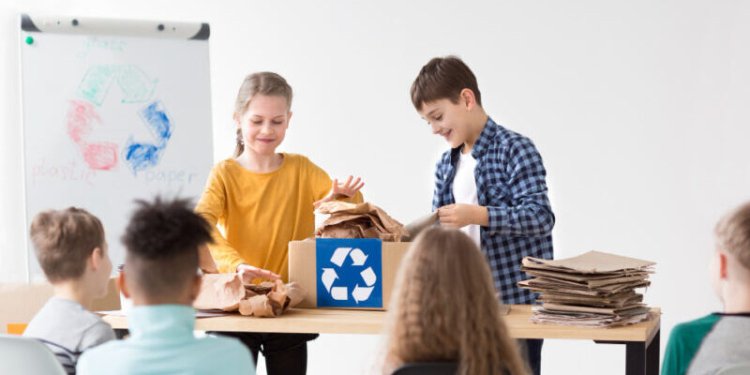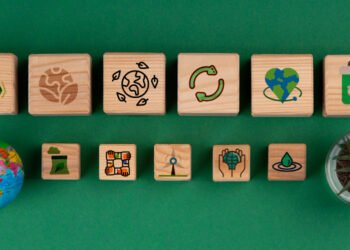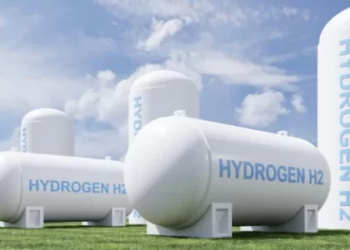As we encounter significant challenges such as climate change and economic shifts, education needs to adapt. Sustainable education, or education for sustainable development, equips students to comprehend the connections among the environment, society, and economy. By integrating STEM teaching methods, students gain skills to address real-world issues and get ready for environmentally friendly careers.
This article examines how innovative classroom strategies are paving the way for a brighter, more sustainable future for all. Let’s explore ways to foster a better tomorrow through education now.
Understanding Sustainable Education
Understanding sustainable education helps individuals realize how their actions impact the environment and society, enabling them to improve the quality of life for future generations. By incorporating experiential learning and hands-on approaches, students become engaged citizens, evolving into citizen scientists who actively participate in their communities.
Educators can integrate sustainable education into existing curricula through place-based learning and case studies, allowing students to explore real-world issues connected to sustainability. The fundamental principles of sustainable education include environmental awareness, social equity, and economic viability. These principles align with the overarching goals of sustainable development, ensuring students recognize their responsibility in fostering a healthier planet.
Through STEM education and various pedagogical approaches, such as project-based learning and collaborative activities, students explore future scenarios and develop skills needed to address sustainability challenges.
The Role of Education in Sustainable Development
Education encourages sustainable practices and environmental awareness by helping students grasp the importance of protecting the earth. Through sustainability education, learners study the connections between the environment, society, and the economy, improving their quality of life. Schools can incorporate sustainability into their curricula with STEM education and hands-on learning, allowing students to address real-world problems.
Approaches like place-based education can inform students about their local environments while inspiring them to become citizen scientists. Collaborations between educational institutions and local communities enrich this learning through case studies and joint projects, enabling students to engage with real-life sustainability challenges.
By adopting diverse teaching methods, including discussions about future scenarios and reflective practices, educators prepare upcoming generations to effectively address global challenges, ensuring a sustainable future for everyone.
UNESCO’s Framework for Sustainable Education
UNESCO’s Framework for Sustainable Education promotes several principles to support effective learning for sustainable development. It emphasizes the significance of sustainability education, connecting education with the environment, quality of life, and future generations. Educators can incorporate these principles into their teaching practices by adopting diverse pedagogical approaches, like experiential learning and place-based learning.
These methods help students engage with real-world issues and understand the role of citizen scientists in studying local ecosystems. By using case studies and focusing on future scenarios, teachers can encourage students to think deeply about their actions. Furthermore, educational institutions are seen as instrumental in fostering a culture of sustainability. They can create learning environments that inspire students to tackle global challenges.
Through innovative learning methods, such as project-based learning, schools can help students develop the skills and knowledge needed to improve their communities and promote a better future for all.
Climate Change Education Initiatives
Climate Change Education Initiatives engage students in understanding climate issues through experiential and place-based learning. By connecting lessons to local environmental challenges, students participate in hands-on activities, which may include becoming citizen scientists, documenting wildlife, or assessing local ecosystems.
Educators apply various pedagogical approaches, such as project-based learning and case studies, to help students explore future scenarios and develop solutions for sustainable development. These methods inspire students to take action and increase their knowledge of sustainability and its impact on quality of life for future generations. To evaluate these initiatives, educators assess student awareness and behavior changes regarding sustainability by tracking engagement levels, gathering feedback on learning methods, and monitoring participation in sustainability projects.
Through these approaches, students gain a deeper understanding of the environment and are better prepared to contribute positively to their communities while addressing climate change.
Greening Education: Practices for a Sustainable Future
Educators can implement innovative practices like place-based learning and experiential learning to integrate sustainability into their curriculum. This approach uses local resources, engaging students with their community while teaching them about the environment. Community partnerships enhance greening education initiatives by allowing students to work on real-life case studies with local organizations.
Students can become citizen scientists as they explore local ecosystems and document wildlife. Incorporating eco-friendly materials into classrooms also supports environmental awareness and sustainable development. Outdoor learning environments, such as school gardens or nature trails, offer students hands-on experiences that connect them to nature, improving their quality of life. Schools can adopt various pedagogical approaches, like problem-based learning and active group projects, to develop future scenarios where students consider sustainability challenges.
By combining these strategies, educators can create a dynamic curriculum that prepares students for the challenges facing future generations while fostering a deep understanding of sustainability concepts.
Innovative Classroom Designs for Sustainability
Innovative classroom designs can incorporate natural elements and sustainable materials that promote eco-friendly learning environments.
For example, classrooms can use recycled materials for furniture and large windows to bring in natural light, reducing the need for artificial lighting. Sustainable education practices encourage students to engage in place-based learning, where they explore local parks and ecosystems, helping them understand their environment better. These layouts support collaborative learning by creating spaces for group projects that emphasize sustainability practices, allowing students to work together on real-world case studies. Technology provides tools for experiential learning, such as apps that help students track and analyze their carbon footprints. As “citizen scientists,” students can document wildlife and engage with the community, while also learning about future scenarios in sustainability.
Various pedagogical approaches, like project-based and interdisciplinary learning, can make these concepts fully engaging, strengthening the connection between education, sustainability, and improving the quality of life for future generations.
Technology’s Impact on Sustainable Education
Technology enhances sustainability education through interactive platforms that foster deeper understanding among students. For instance, experiential learning enables students to engage in place-based activities and use tech tools to document their observations as citizen scientists, building skills to tackle real-world challenges. Various teaching methods, like project-based learning, can incorporate tech resources to create engaging case studies showcasing sustainability practices.
Additionally, apps and online tools can increase awareness and motivate student involvement in sustainable development initiatives. Although integrating technology into sustainability education can present challenges, such as ensuring fair access and properly training educators, these issues can be managed by developing comprehensive learning methods that include technology as a core element.
By crafting future scenarios, educators can inspire students to think critically about their roles in promoting sustainability and enhancing quality of life for future generations.
Community Involvement in Sustainable Educational Practices
Community partnerships can greatly improve sustainable educational efforts in local schools by linking students with real-life projects that enhance their surroundings and overall living conditions. Local residents can actively participate in these initiatives by sharing their expertise and resources, which can be integrated into hands-on learning and case studies.
For instance, local environmental organizations might team up with schools to create immersive learning experiences, where studentstake on the role of citizen scientists, conducting research on local ecosystems. Furthermore, input from the community is significant in shaping sustainability education programs, as it allows educators to modify their teaching methods to better align with the needs of both students and the environment.
By incorporating community perspectives in the planning process, schools can devise future scenarios that mirror local values and issues, ensuring that students receive an education that is relevant and impactful for sustainable development.
Promoting Awareness Through Sustainable Education
Sustainability education raises awareness about environmental issues by connecting students with real-world challenges, promoting a deeper understanding of the environment. Through STEM education, students learn about the interconnectedness of ecological, economic, and social systems, enhancing their knowledge of sustainable development.
Educators can adopt various teaching methods, such as experiential learning and place-based activities, where learners engage in hands-on experiences and case studies that highlight local environmental concerns. Involving the community can amplify the impact of these initiatives, as partnerships with local organizations encourage students to become citizen scientists, contributing to real data collection and analysis. By exploring future scenarios through projects and discussions, students gain insights into how their actions can improve the quality of life for future generations.
This approach encourages critical thinking and empowers students to make informed decisions that benefit the environment and society.
5 Tips for Implementing Sustainable Practices in the Classroom
1. Integrate Sustainability into the Curriculum
Educators can effectively incorporate sustainability concepts into existing curriculum frameworks by using various pedagogical approaches, such as project-based and place-based learning. These methods encourage experiential learning, allowing students to connect lessons to real-life situations.
For example, students might conduct case studies on local environmental issues, which can help them understand the impact of human activities on the environment and explore how sustainable development improves the quality of life for current and future generations. To engage students in discussions about sustainability, teachers can invite them to be citizen scientists, sharing their observations of nature or environmental changes in their communities. Interdisciplinary approaches enhance understanding of sustainability by connecting topics across subjects, such as science, math, and social studies, while exploring future scenarios and solutions to environmental challenges.
By adopting engaging learning methods, educators can foster curiosity and analytical thinking, helping students recognize their ability to promote sustainability for future generations.
2. Use Eco-Friendly Materials
When selecting eco-friendly materials for education, criteria such as renewability, biodegradability, and the overall effect on the environment are significant. Educators can convey their relevance through discussions on sustainability education and how these materials improve the quality of life for both current and future generations.
For example, they might use recycled paper, natural inks, or biodegradable art supplies in projects to show sustainable development. Place-based learning allows students to study local ecosystems, encouraging them to think like citizen scientists as they explore their surroundings. Educators can implement experiential learning by involving students in projects that analyze case studies of eco-friendly businesses or community initiatives, highlighting the positive outcomes of using eco-friendly materials.
By promoting creative thinking about future scenarios, teachers can help students recognize how their decisions today influence the environment tomorrow. These teaching methods ensure that students understand the significance of sustainability in an engaging and impactful manner.
3. Foster Outdoor Learning Environments
Educators can effectively incorporate natural settings into their teaching strategies by using outdoor areas as living classrooms that enhance student engagement and learning results. This could include activities like nature walks, where students observe and record their findings, or gardening projects that provide hands-on learning about ecosystems. Specific outdoor learning activities, such as studying plants and animals, can promote environmental awareness and sustainability.
Students can participate in initiatives like monitoring local species, becoming citizen scientists who contribute to real-world conservation efforts. Collaborating with local ecosystems and community resources enriches outdoor experiences by incorporating place-based learning. Educators can draw on nearby parks, riverbanks, or businesses to create case studies that explore sustainable development.
By applying varied teaching approaches, such as problem-based learning and role play, students can discuss futurescenarios relevant to their local environment, enhancing their understanding of sustainability education. These experiences aim not only to teach students about the environment but also to inspire them to actively consider the quality of life for future generations.
4. Encourage Student Participation in Green Projects
Educators can inspire students to actively engage in green projects by integrating sustainability education into the curriculum. By using experiential learning and place-based approaches, teachers can connect lessons to real-world environmental issues in their community. This hands-on strategy allows students to see how their actions can positively impact the environment and improve quality of life for future generations.
Implementing diverse teaching methods, such as collaborative learning andcase studies, feels inclusive and empowers every student to join sustainability initiatives. For instance, involving local environmental organizations as guest speakers provides students with insights into real projects and fosters a sense of responsibility.
Additionally, creating opportunities for students to act as citizen scientists, where they collect data or monitor ecosystems, promotes teamwork and explores future scenarios for sustained ecological health. Engaging students this way helps them develop important skills in STEM education, building a foundation for sustainable development and preparing them to navigate complex environmental challenges.
5. Collaborate with Local Environmental Organizations
Integrating local environmental organizations into sustainability-focused education initiatives provides students with real-world applications of their learning. These partnerships enhance student engagement by connecting them with community members working on actual environmental issues. For instance, students can participate in experiential learning projects, like planting trees or creating wildlife habitats, where they learn about ecology while contributing positively to their community.
Collaborative efforts often include guest speakers from these organizations who share insights on sustainable development and quality of life improvements. Another effective method is using place-based learning; students might collect data and conduct case studies on local ecosystems, gaining valuable insights while acting as citizen scientists.
Successful collaborations highlight diverse pedagogical approaches, inviting students to imagine future scenarios and engage in discussions about sustainability. Schools have reported higher student interest in STEM education when such partnerships are present, demonstrating how real-life involvement fosters a deeper understanding of sustainability education and the interconnectedness of environmental factors.
Sustainable Education as a Response to Global Challenges
Sustainable education addresses global challenges like climate change, inequality, and resource depletion by fostering an understanding of the connections among education, the environment, and society. Students gain insights into sustainability through STEM education, preparing them for development and highlighting the significance of quality of life for future generations.
Educators can motivate students to take action through place-based and experiential learning methods, guiding them to become citizen scientists engaged with their communities. Various teaching strategies, like case studies and real-world projects, enhance thinking and problem-solving abilities. By promoting a mindset of sustainability and resilience, educators help students envision future scenarios where they can make meaningful choices. This comprehensive learning equips students to create solutions that benefit themselves, the planet, and society collectively.
Current News and Trends in Sustainable Education
Recent advancements in sustainable education are influencing policies and practices globally as more schools see the importance of integrating education with sustainability. Institutions are increasingly adopting STEM education to equip students with skills for sustainable development, tackling environmental challenges and improving quality of life for future generations. Emerging trends also include the incorporation of technology, which helps create engaging learning methods.
For instance, students can become citizen scientists by using apps to document local wildlife, fostering an understanding of their surroundings.
Additionally, place-based learning enables schools to collaborate with local organizations, applying case studies from the community to link classroom knowledge with real-world issues. This hands-on approach encourages students to think critically about future scenarios, motivating them to take part in discussions about sustainability through various teaching methods. Through these partnerships, students not only learn about sustainability but also feel empowered to tackle environmental issues in their communities.
FAQ
What is sustainable education and why is it important?
Sustainable education integrates environmental, social, and economic principles into learning. It fosters critical thinking and empowers students to tackle global challenges. Examples include environmental science programs, service-learning projects, and promoting resource conservation initiatives. This education is vital for developing responsible citizens who can create positive change.
How can I incorporate sustainability into my classroom activities?
Incorporate sustainability by using recycled materials for projects, organizing nature walks, implementing a classroom garden, or holding discussions on climate change. Additionally, encourage digital assignments to reduce paper use and promote energy-saving habits, like turning off lights and devices when not in use.
What are some examples of sustainable practices that can be implemented in schools?
Implement recycling programs, create a school garden, utilize energy-efficient lighting, promote water conservation, integrate eco-friendly materials in classrooms, organize carpooling or bike-to-school days, and teach sustainability through dedicated curricula.
How does sustainable education benefit students and the community?
Sustainable education equips students with skills to address environmental challenges, fostering critical thinking and collaboration. Examples include community garden projects enhancing food security and recycling initiatives teaching resource management, benefiting both students and their communities.
What resources are available for educators looking to promote sustainability in their teaching?
Educators can access resources like the U.S. Environmental Protection Agency’s curriculum guides, join organizations like EcoSchools, and utilize websites like Teach Sustainability for lesson plans. Additionally, local initiatives, community gardens, and virtual workshops can provide practical, hands-on experiences in promoting sustainability.





